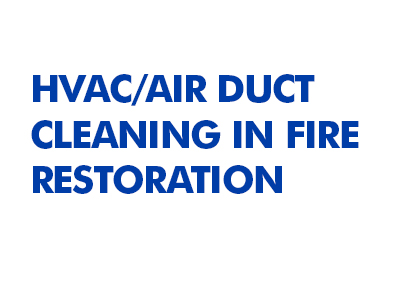Hands are the second most common body part to be injured at work and workers who injure their hands can cost businesses in more than one way: fines, lawsuits, employee medical bills, workers’ compensation, and lost time. Occupational hand injuries can be largely attributed to not wearing gloves or wearing the wrong type of glove for the task. In this article, we aim to guide you in your selection of the right gloves for proper hand protection.
OSHA’s standard for hand protection, 1910.138, is vague and leaves much to be determined based on application and risk factors. Essentially, employers are required to select hand protection for employees when a job safety analysis determines that hand hazards are present. OSHA directs employers to also consider performance characteristics relative to the task, conditions present, and duration of use.
The hazards that you will want to consider include:
- Skin absorption of harmful substances
- Severe cuts or lacerations
- Severe abrasions
- Punctures
- Chemical burns
- Thermal burns
- Harmful temperature extremes
If you are seeking design requirements to assist you with the proper selection of gloves, you will be happy to learn that the American National Standards Institute (ANSI) and the International Safety Equipment Association (ISEA) address the testing of hand protection and confirm ratings for personal protective equipment that meet specific performance properties. The ANSI/ISEA standard, 105-2016, puts gloves to the test, so you can focus on getting the job done.
Cut, Abrasion and Puncture-Resistant Gloves
Cut, abrasion, and puncture-resistant materials have made technological leaps over the years. Steel and glass fiber reinforcements are still used but are often heavy and detract from dexterity and task accuracy. Lightweight, breathable, and elastic performance fibers like DuPontTM Kevlar® and Dyneema® Diamond Technology are the popular choice for industrial work. These gloves are often coated or dipped on the palm for increased cut, abrasion, and puncture-resistance at the most vulnerable part of the hand. Coatings and dips also lend to grip strength, chemical- and oil-resistance, heat-resistance, or vibration protection depending on the material.
ANSI Cut Ratings
| ANSI Cut Level | A1 | A2 | A3 | A4 | A5 | A6 | A7 | A8 | A9 |
| Weight (grams) needed to cut through material | ≥ 200 | ≥ 500 | ≥ 1,000 | ≥ 1,500 | ≥ 2,200 | ≥ 3,000 | ≥ 4,000 | ≥ 5,000 | ≥ 6,000 |
| Tasks & Industries |
|
|
|
|
|
|
|
|
|
ANSI Puncture Ratings
| Low | Low-Medium | Medium | Medium-High | High | |
| Puncture Level | 1 | 2 | 3 | 4 | 5 |
| ANSI/ISEA (Newtons) | 10 – 19 N | 20 – 59 N | 60 – 99 N | 100 – 149 N | 150+ N |
Chemical- and Oil-Resistant Gloves
Chemical- and oil-resistant gloves are worn as a barrier between the hands and lower arms and any substance that could cause chemical burns or be harmful if absorbed by the skin. These gloves are intended to be used more than once but should be replaced over time if degradation is caused by potent chemicals, long-term exposure, or environmental conditions. It is essential to understand the substances (acids, solvents, alcohols, greases, hydrocarbons, etc.) and how they will be used for the task before selecting a glove material. If you have any doubts, check the Safety Data Sheet (SDS) for the chemical or oil product, which has the manufacturer’s specifications for safe handling.
Chemical- and oil-resistant gloves come in several materials including nitrile, neoprene, latex, and natural rubber, to name a few. Each material is unique in its ability to resist degradation to and permeation of specific substances.
Nitrile is a synthetic rubber, offers excellent abrasion resistance, and is a favorite among chemical and oil handlers. Nitrile has good resistance to:
- Chlorinated solvents
- Weak acids and caustics
- Fuel
- Petroleum products
- Oils, greases
Neoprene is also a synthetic rubber material that chemical and oil handlers like to use. Neoprene offers high tensile strength and heat-resistance but can become rigid in colder environments below 60 degrees Fahrenheit. Neoprene has good resistance to:
- Some acids and caustics
- Most solvents
- Oils, greases
Flock lining is the cotton lining on the inside of the glove. Flock-lined gloves add protection and comfort for the user. The cotton absorbs moisture and makes it easier to put on and take off the glove. The lining adds an extra layer, so the glove is thicker, which improves puncture and abrasion resistance, but may detract from overall glove dexterity.
Disposable Gloves
Disposable gloves are used similarly to chemical- and oil-resistant gloves but are designed for single use and may not be quite as robust. Disposable gloves come in three main materials: vinyl, latex, and nitrile.
- Most cost-effective material, making them a popular choice when gloves are changed often
- Less breathable with potential to cause sweating of the hands
- Lowest tactile sensitivity of the three glove material types; meaning, the wearer has less sensitivity to touch
- Fit more loosely than other glove materials which can result in decreased accuracy and hand fatigue for the wearer
- Not a good choice for highly infectious, contaminated, or chemical applications
- May cause allergic reactions in individuals with latex sensitivities
- Excellent choice for barrier protection and fit
- Highest comfort and dexterity of the three glove material types
- Better puncture resistance than vinyl gloves
- Favorite of medical and janitorial professionals who encounter bloodborne pathogens and bodily fluids
- Alternative for those with latex allergies
- Most expensive disposable glove material
- Provides suitable flexibility and tactility
- Superior tear and puncture resistance
- Often the preferred glove for barrier protection from bodily fluids, chemicals, and microorganisms
Knit, Jersey, and Canvas Gloves
Knit, jersey, and canvas gloves are designed for light-duty work. These types of gloves are not typically rated for abrasion, cut, or puncture resistance. They mainly offer protection from dirt, chafing, moderate environmental temperatures, and light abrasion or friction burns. Palm materials may vary to offer added durability, abrasion/cut/puncture-resistance, and grip strength.
Jon-Don is a customer-centric supplier of equipment, parts, chemicals, and safety supplies to professional contractors across a variety of industries including disaster restoration, concrete surface prep and polishing, janitorial/building services, and professional carpet cleaning. We have real-world knowledge and expertise to help you tackle your toughest jobs. Our expert representatives are just a phone call away and are ready to assist you with the selection of the right safety gear. Jon-Don offers same-day shipping plus the nation’s largest 1- and 2-day shipping area, so you can start working safely tomorrow!














Comments